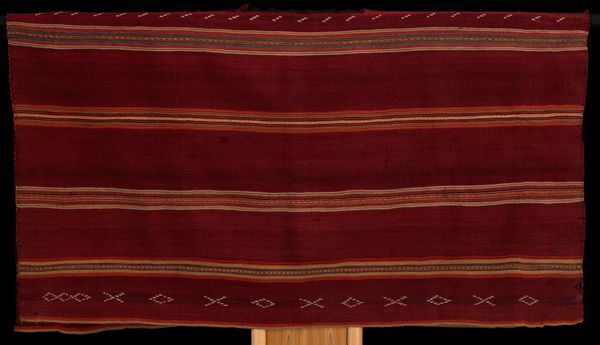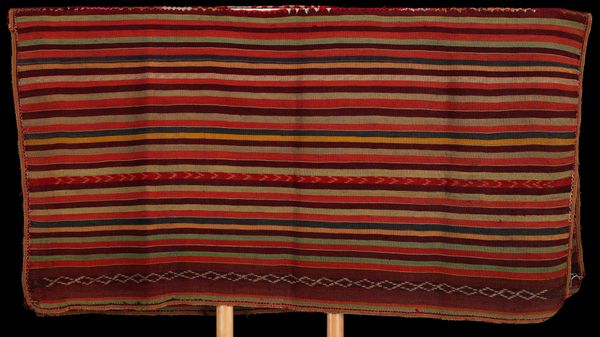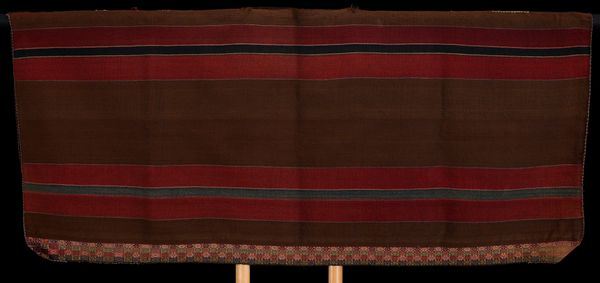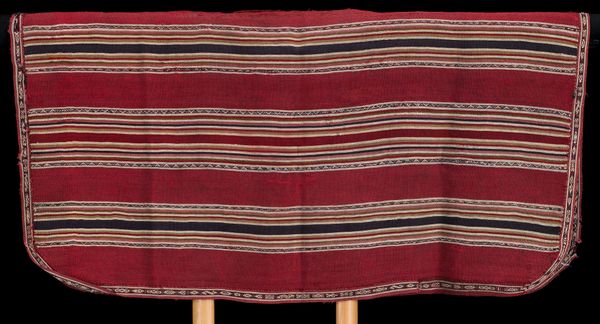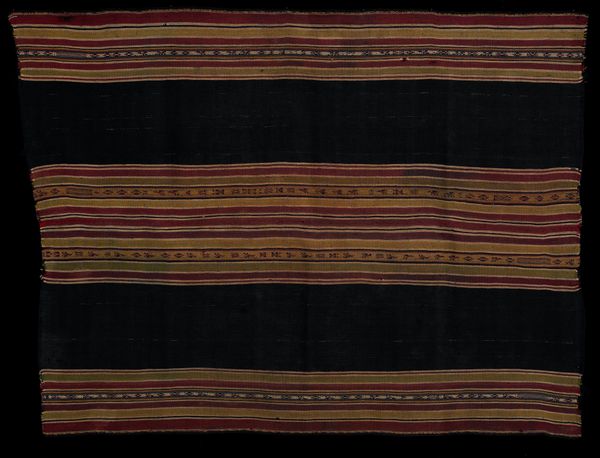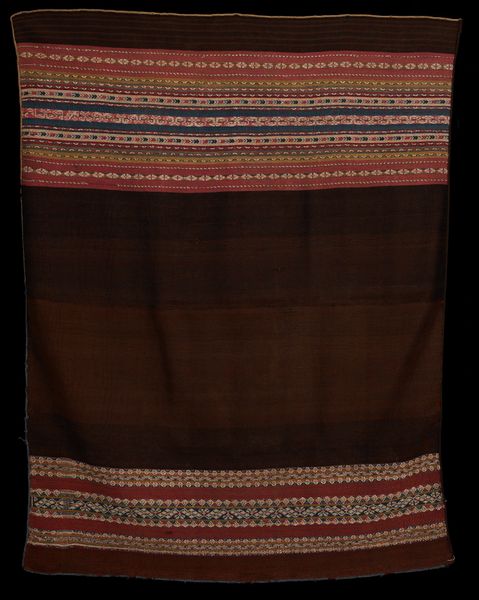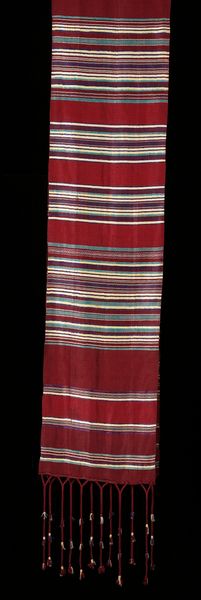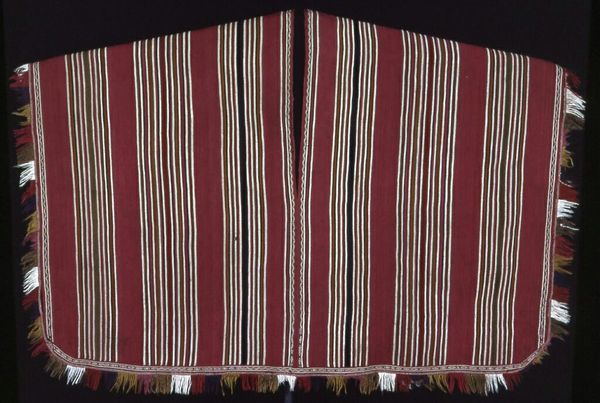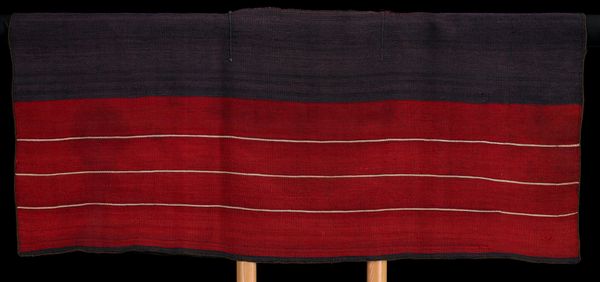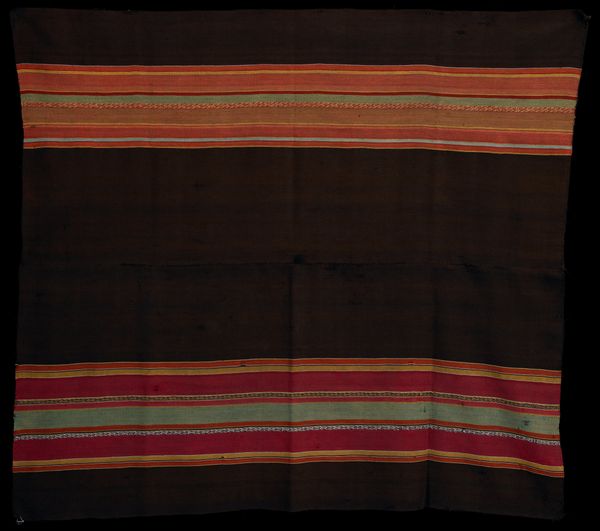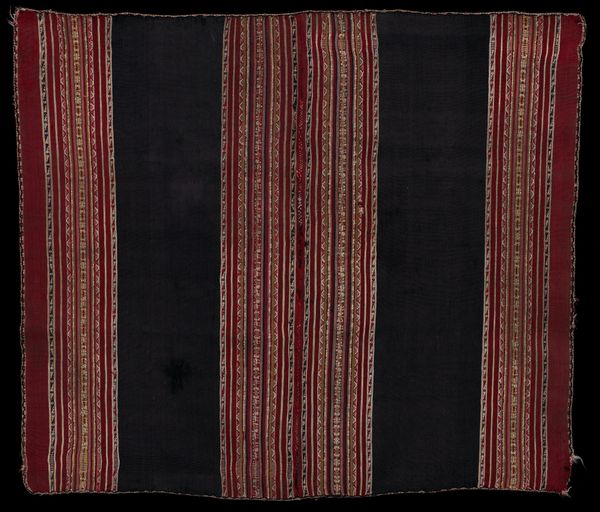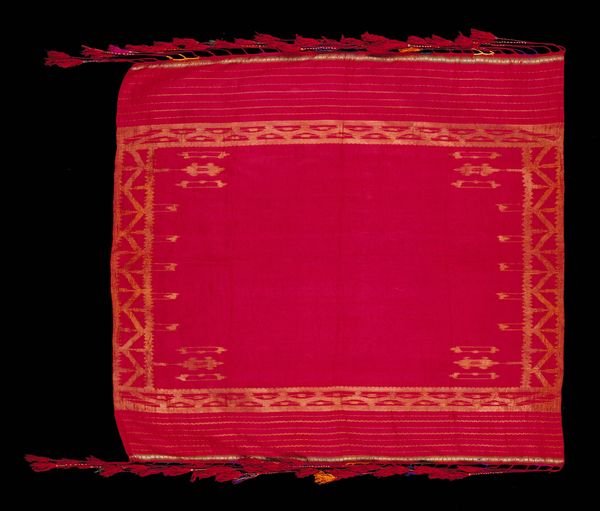
fibre-art, weaving, textile
#
tribal design
#
fibre-art
#
weaving
#
textile
#
geometric pattern
#
geometric
#
indigenous-americas
Dimensions: 29 3/16 x 44 3/4 in. (74.14 x 113.67 cm) (folded)
Copyright: Public Domain
Curator: Immediately, I am enveloped in a feeling of warmth and refuge. That deep, rich red, it whispers of ancient dyes and hands patiently crafting stories into every thread. It feels incredibly grounded. Editor: We are looking at a textile, a poncho to be exact. Created by the Quechua people, it’s a 20th-century example of fibre art, currently residing at the Minneapolis Institute of Art. Curator: Fibre art... That doesn’t quite capture it, does it? I mean, it's beyond mere utility, wouldn’t you say? This is clearly communication. Each band of color, each precisely placed line and pattern feels deliberate, charged with intention. Editor: Absolutely, and it’s worth noting the historical context of such pieces. Textiles held immense social and political weight within indigenous Andean societies. They could denote status, lineage, even resistance against colonial powers. The imagery was a powerful visual language. Curator: I imagine it clinging to someone against a severe mountain wind, maybe carrying whispers of community stories, mapping familial journeys onto its warp and weft... Textiles, particularly in a place like the Andes, they are so intensely *lived*. It almost pulsates with human energy. Editor: And consider its circulation: destined not just for the body of its wearer, but also potentially for trade, for ceremonial display, for diplomatic exchange... Even its presence here, within a museum, reframes that circulation. It asks questions about access, preservation, and the very act of seeing. Curator: Museums can be mausoleums sometimes, robbing pieces of their vital, living purpose. Yet, simultaneously, allowing us an unexpected encounter with these soulful, textured echoes from… Well, from lived realities we barely grasp. I hope people touch its energy when they pass by. Editor: Perhaps its stillness here invites a different kind of engagement: a deliberate pause, a considered reflection on craft, history, and the politics of representation itself. What stories does it conceal, and what does its ongoing visibility mean for cultural heritage today? Curator: Precisely that layering, right? An ancient song being sung by an old heart and with contemporary ears listening. Editor: Thank you, that’s helped me see the textile anew.
Comments
No comments
Be the first to comment and join the conversation on the ultimate creative platform.
